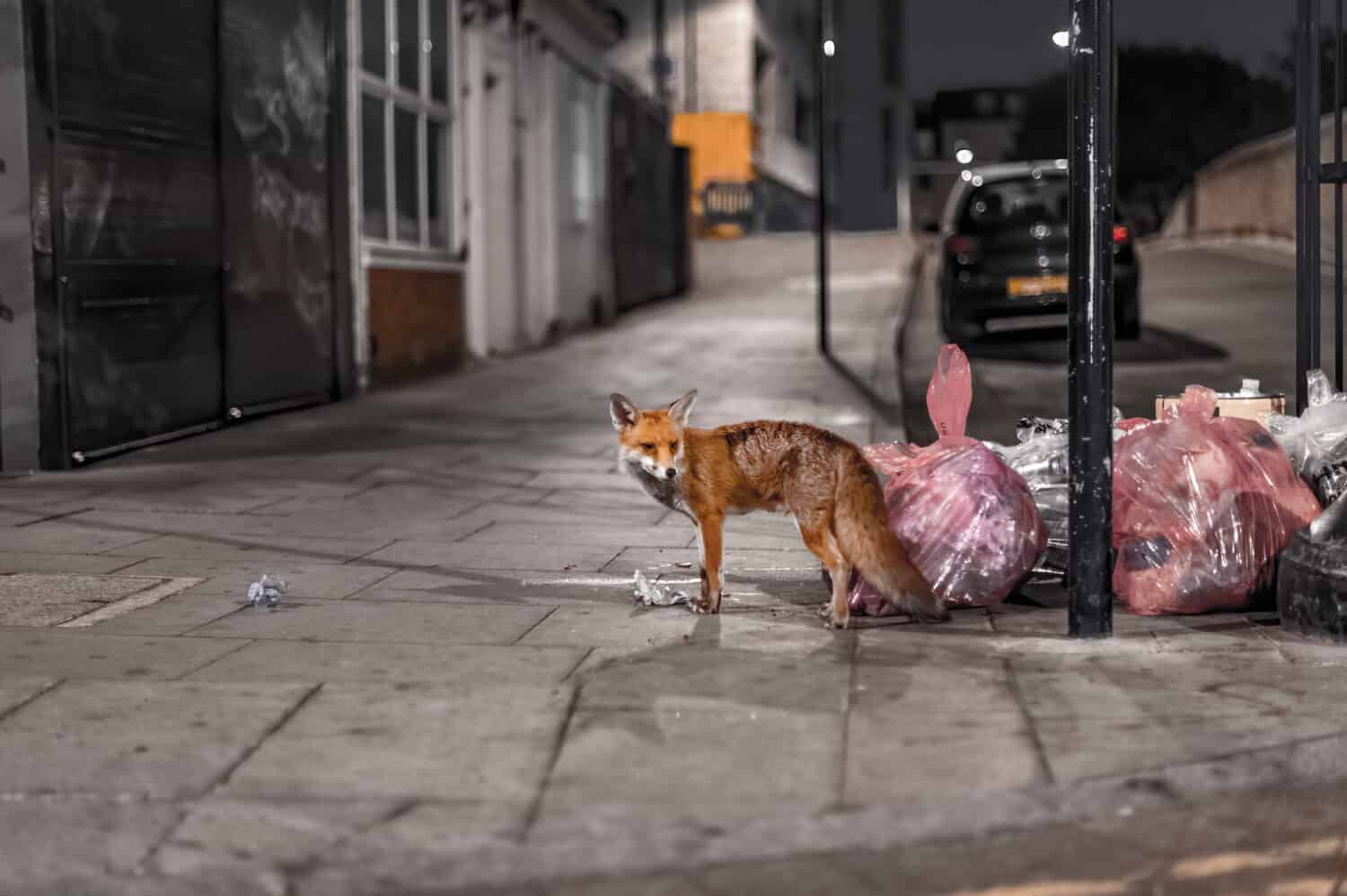Animal poop, also known as scat, is one of the best ways to identify what has been lurking around. While it doesn’t require in-depth skill, learning key characteristics of scat can help you identify what animal has been traveling through your territory. One of the most common culprits is people trying to identify the difference between fox poop vs. dog poop.
In reality, both of these droppings can seem similar at one glance. However, minor differences between the two can tell you the difference. Plus, it’s good to know whether your friendly neighborhood dog is just leaving some droppings versus a wild animal such as a fox.
You can check this guide to learn how to identify animal scat. Aside from that, we can teach you the key differences between fox poop vs. dog poop down below.
Fox Poop vs. Dog Poop: The Key Differences
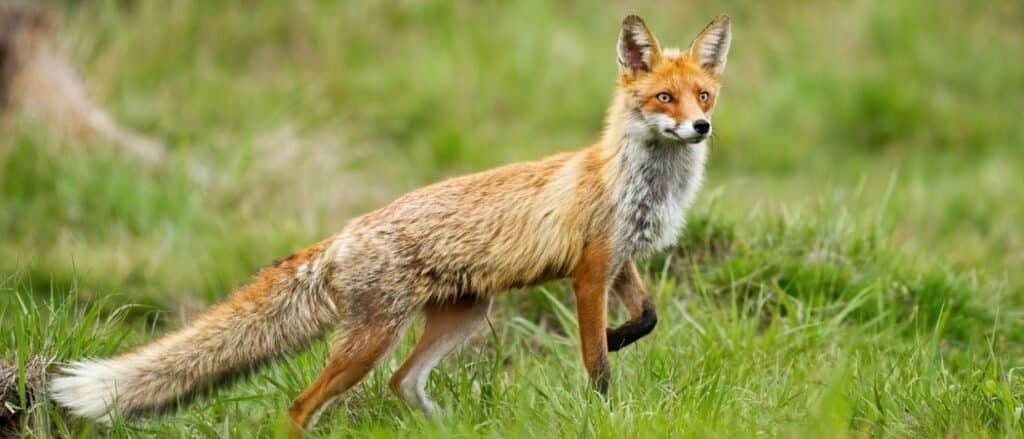
A fox’s scat will differ depending on whether it lives in urban or rural areas.
©iStock.com/JMrocek
One needs to consider a few factors before identifying fox and dog poop. While shape, size, and color guidelines exist, other factors can make identifying the scat harder. For example, the animal’s diet, location, and size will significantly influence the appearance of scat.
In addition, it depends on if the animal is in an urban location versus a rural one. All these elements can slightly alter the appearance of the animal’s droppings, making it more challenging to identify. Despite that, we will teach you some tips and tricks on correctly identifying fox and dog poop.
Fox Poop: Appearance, Size, and Color
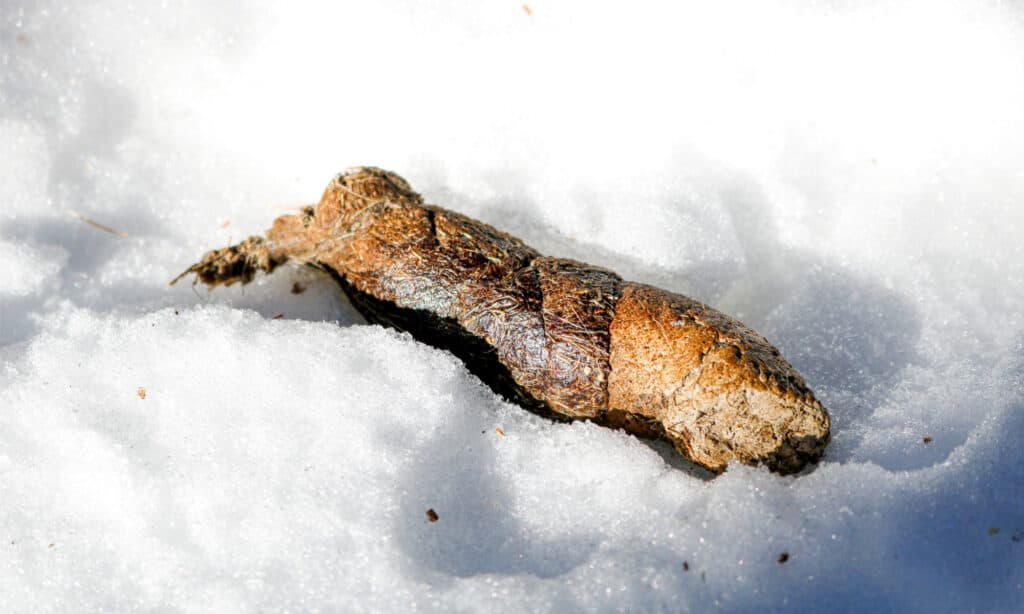
A fox’s poop will have a lighter color, with fur, bones, or other objects sticking out.
©iStock.com/lauraag
Fox poop is almost always confused for dog poop due to being very similar in appearance. However, key differences allow trackers to distinguish dog poop from fox poop. Mainly, fox droppings have the following characteristics.
Appearance
Regarding scat, fox poop tends to be longer and more twisted than dog poop. A fox’s diet is much different than a dog’s diet. Depending on where they live, their diet may consist of birds, mammals, and other types of prey versus berries and trash. All of these factors influence the overall appearance of the poop.
Shape
The shape of a fox’s poop generally is tubular and pointed at the ends. The scat has a half an inch diameter, and the length is up to two inches. Unlike dog poop, fox scat tends to be in a single string and, in rare cases, two or three.
Texture
The texture of fox scat will depend on when it is excreted. When fresh, the scat will be wet and smooth in appearance. However, it will be tight and dry once it is dry. If the scat is still wet, you can assume the fox is still in the area. If not, then it’s likely old and has left the area.
Color
As with any mammal, the type of food it consumes will change its overall color of it. Foxes tend to have scat that is tan or dark brown. However, this highly depends on whether they live in rural or urban areas.
Dog Poop: Appearance, Size, and Color
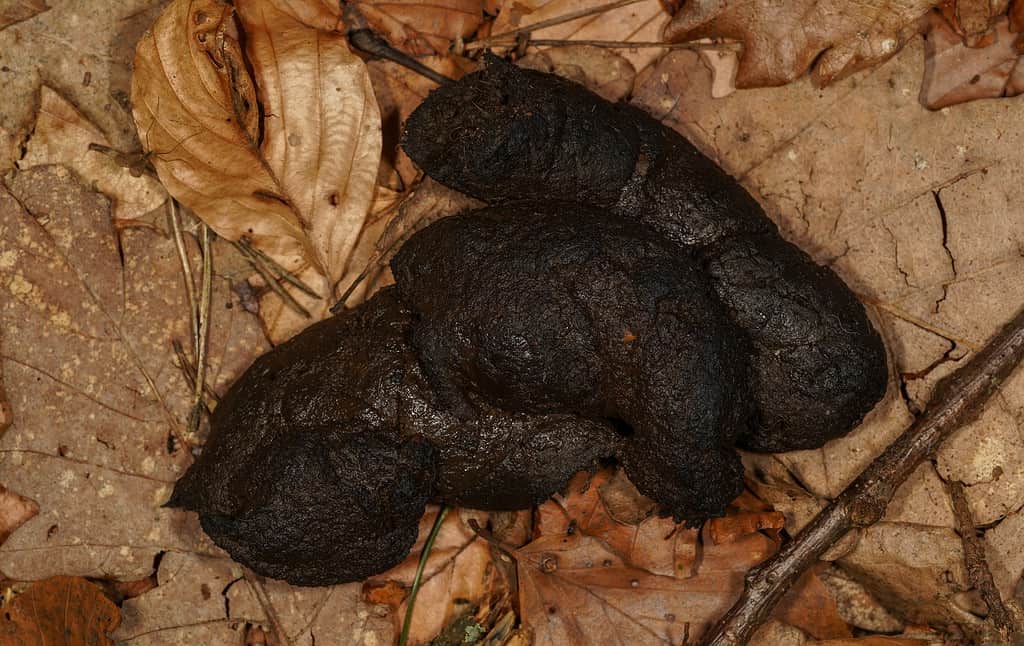
A dog’s poop will have a deeper color and oval shape.
©iStock.com/Amazing Nature Photography
Dog scat is a bit difficult to distinguish, as there are differences between breeds, sizes, and diets. With these factors, it’s important to remember that a dog’s scat can vary in size and appearance. Here is what you can expect a dog’s scat to be like.
Appearance
Dog poop is challenging to describe, as the appearance will differ depending on the canine’s breed and size. Generally, typical dog poop tends to be dark and smooth and only has small divots. A large dog’s poop is often much bigger than a fox’s. On the other hand, a small dog might look to have droppings of another animal.
Shape
In terms of shape, dog poop will be segmented and even be similar to a caterpillar’s shape. However, many have described a dog’s poop as being almost log-shaped. The scat should span two to three inches in width and be up to three to four inches long.
Texture
The texture of a dog’s scat also changes depending on the dog’s diet. On average, a dog’s poop will be firm, almost like Play-Doh. This is mainly due to the fiber content found in most dog food. However, if a dog has an inconsistent or unbalanced diet, their scat can be watery or rock-hard.
Color
Typically, a dog’s scat tends to be a rich chocolate-brown color. However, there might be small deviations in color and hue to do its diet and hydration. Dogs fed a white meat diet like fish, chicken, or turkey tend to have lighter-colored scat.
Fox Poop vs. Dog Poop: Other Key Distinctions
Besides the overall appearance, there are a few other indicators of whether the animal is a domestic dog or a predator. A fox will have a few factors indicating that its scat is from a wild animal.
Smell
The smell is also a significant indicator of the type of scat. Fox fecal matter tends to have a more pungent odor than other animals. The reason for this is that their glands produce a musky scent. That odor is then transferred as the animal pushes out their droppings.
Other Matter
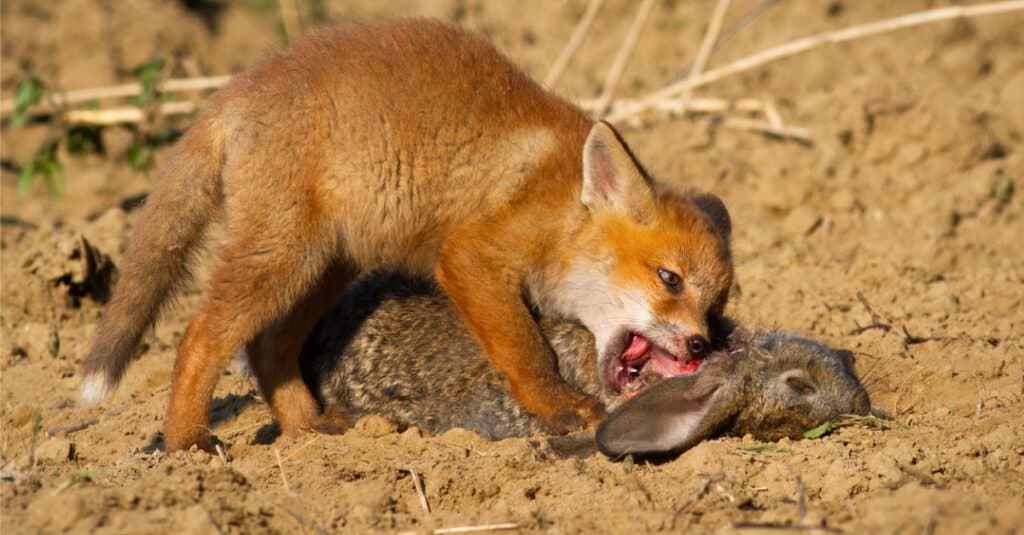
A fox’s scat will change depending on its diet.
©iStock.com/JMrocek
Since a fox tends to have a carnivore-based diet and is catching other animals outdoors, their scat will represent that. The leftover matter, such as feathers, hair, and bones, is often scattered in their scat. Their stool doesn’t always have leftovers, as foxes live in urban areas. Foxes’ fecal matter can be very similar to dogs’ if they live in an urban area with access to cat food, trash, and more human delicacies.
Toxicity
A fox’s stool can also be toxic to other animals. Often, foxes are exposed to roundworm parasites which can produce a rare infection called Toxocariasis. Other mammals and humans can get this disease if exposed to fox feces.
Fox Poop vs. Dog Poop FAQs
Are All Fox Scats Similar?
No, fennec foxes, arctic foxes, and other small breeds tend to have smaller stools. Their diets are also more focused on scavenging, which results in their scat being a different hue and color. Be sure to look up a specific type of fox scat if you know what species is in the area.
Is Fox Poop Toxic to Dogs?
Dogs often don’t mind rolling around in other species’ scat. The problem is that fox poop can be toxic to dogs. Fox scat has parasites and can cause diseases. If your dog has eaten or come into contact with fox poop, you should immediately bring them to a vet.
How Do I Know If It’s Fox Poo?
Fox stool is often very similar to dog poop, but the main difference is their diets. A fox’s scat will be pointy and twisted and include other objects such as bones, feathers, etc.
What Does It Mean When a Fox Poops in Your Yard?
In most cases, a fox that leaves droppings in your yard is marking its territory. Using the smell, animals use their urine and poop to help mark their territory. This is mainly used against other foxes or medium-sized animals. It lets them know that your yard is taken and that other animals should not enter.
Why Are Dog Poop and Fox Poop Similar?
Foxes are mainly carnivores, and so their poop tends to resemble a dog’s scat because dogs eat primarily protein. This is especially true if a fox lives in a more urban environment. A fox is known to scavenge for food, meaning it might consume trash such as leftover bread, meat, etc. So, their scat may be more dog-like as dog food typically has a mixed diet of grains, meat, and filler.
Thank you for reading! Have some feedback for us? Contact the AZ Animals editorial team.

